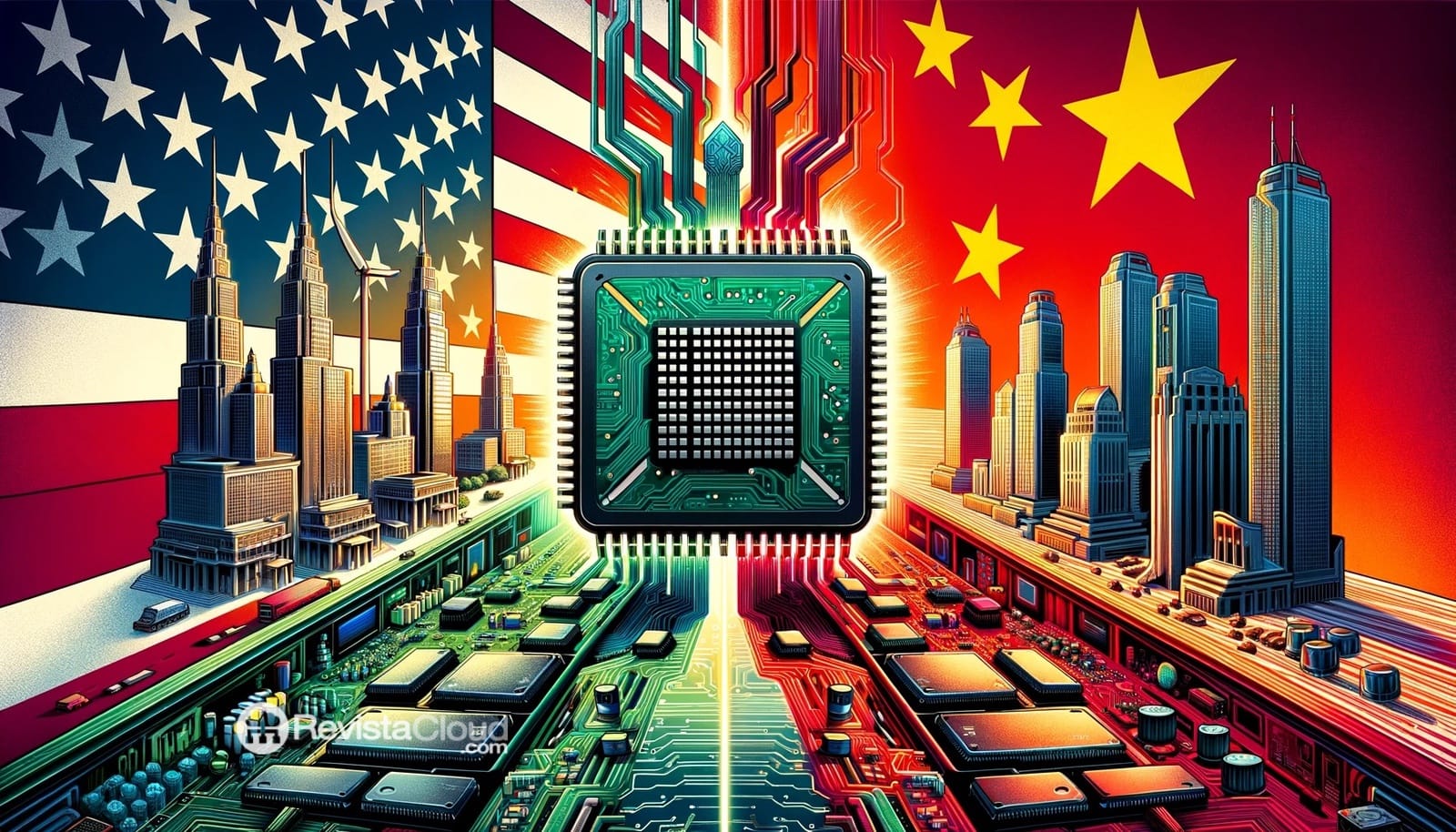Here’s the translation:
—
The massive expansion of the semiconductor sector in China could position the country as the leading global manufacturer before the end of the decade. However, beneath the industrial boom, geopolitical tensions and technological challenges persist.
China is accelerating its race for technological dominance. According to a recent report from Yole Group, the Asian giant is expected to reach 30% of global semiconductor foundry capacity by 2030, up from the 21% it held in 2024. If these projections hold true, it will surpass Taiwan, the current leader with a 23% market share, for the first time.
The growth of China’s industry is not accidental. It responds to state strategy that has mobilized hundreds of billions of euros in public and private investments. In 2024 alone, China processed 8.85 million wafers per month, and this figure is expected to rise to 10.1 million by 2025. This has been made possible in part by the construction of 18 new fabs, such as the Huahong Semiconductor plant in Wuxi, which began volume production in early 2025.
Advantage in Mature Nodes, but Lacking Access to Cutting-Edge Technology
Despite the boom, China still faces significant limitations. Restrictions imposed by the United States prevent it from accessing critical tools such as EUV lithography equipment from ASML (Netherlands) or the most advanced electronic design automation (EDA) software. This limits its ability to compete on par in the cutting-edge nodes, such as 3 nm or lower.
In response, Beijing has redoubled its efforts to develop its own tools and technologies, which could allow it to close the gap with powers like South Korea or Taiwan in the future. Meanwhile, it is solidifying its position as the world leader in producing mature node chips, which are in high demand in sectors such as automotive or appliances.
United States: Demand Without Production
The U.S. case is the reverse of China’s. While it accounts for 57% of global chip demand, its production capacity barely reaches 10%. This forces companies like Apple, Nvidia, and Qualcomm to import most of their semiconductors from Asia, primarily from Taiwan, South Korea, and Japan. Initiatives like the CHIPS Act aim to reverse this dependency, but they are still far from having a tangible impact.
In contrast, Europe and Japan present a more balanced situation, with domestic production capable of covering a significant portion of internal demand.
Geopolitical Risks: The Role of Taiwan and the Shadow of Conflict
The Chinese advance presents an unprecedented geostrategic risk scenario. Many analysts fear that if China achieves self-sufficiency in critical nodes or develops “good enough” capabilities, it may attempt an aggressive action toward Taiwan, home to TSMC, the largest manufacturer of advanced chips in the world.
In this context, the term “capturing” one-third of the market carries implications beyond the industrial realm. Some analysts warn that Beijing might try to control or incapacitate TSMC’s infrastructure to restrict the rest of the world’s access to the most advanced chips. Hence, TSMC’s plans for diversification in the United States and Japan, albeit with limitations in scale and efficiency.
“Merely owning a chip factory does not guarantee its operation. A global supply chain — like ASML in Europe or the Japanese chemicals industry — is extremely difficult to replicate,” notes an expert cited in technology forums.
Towards a New Era of Technological Blocks
The Chinese strategy seems to aim at controlling the entire chip value chain, from design to machinery manufacturing, to avoid sanctions and depend solely on domestic capabilities. If successful, it will not only gain independence but will also be able to compete directly on price with current major manufacturers, undermining their position in the market.
Meanwhile, countries like India and Vietnam are trying to position themselves as low-cost alternatives, while the United States and Europe increase their subsidies to attract industrial investment and avoid a new dependency.
Conclusion
China is transforming its position on the global technological map at a breakneck pace. While dominance in the most advanced nodes remains contested, its leadership in volume and production capacity is undeniable. The question now is not whether China will dominate the chip market, but when it will do so and what consequences this will have for the global technological, economic, and geopolitical balance.
via: techpowerup
—

